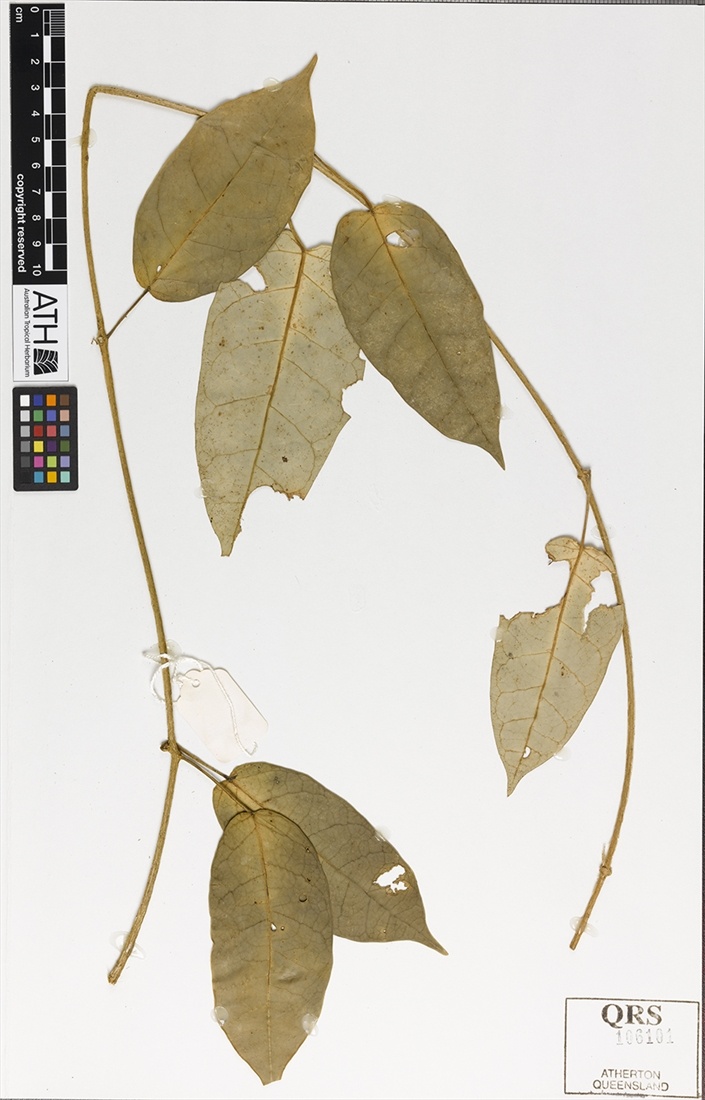Australian Tropical Rainforest Plants - Online edition
Marsdenia glandulifera C.T.White

White, C.T. (1945), The Queensland Naturalist 12: 54. Type: "Wide Bay District: Fraser Island, F.C. Epps (type: flowers).
Wiry vine up to 5 mm diameter, milky latex present. Stems hairless or with sparse hairs.
Milky exudate present. Leaves simple, opposite. Stipules 2 per leaf, horn-like, 0.2-0.4 mm long, ± obscure. Petiole 2-3.5 cm long, grooved along top. Leaf blades elliptic to oblong-elliptic or ovate, rarely obovate, 2.5-14 cm long, 2-9 cm wide, base cordate, margin entire, apex acuminate and mucronate. A bundle of 8-12 colleters present at junction of leaf base with petiole. Venation with 6-8 pairs of lateral veins. Surfaces hairless or with scattered hairs on lower surface.
Inflorescences axillary, flowers in umbels. Pedicels 4-18 mm long. Flowers bisexual, actinomorphic, 5-merous, 7-13 mm diam., cream. Sepals 5, ovate, partially connate, 2.5-4 mm long. Petals fused to form a corolla tube, campanulate (bell-shaped), tube 2.5-4 mm long, lobes spreading, 3.5-5.5 mm long, contorted in bud. Corolline corona of 5 ridges of hairs alternate to lobes. Staminal corona of 5 oblong lobes longer than the staminal column, overtopping style head. Staminal column of 5 stamens, connate into a gynostegium; gynoecium of 2 ± free carpels, ovaries superior, style head conical.
Features not available.
This profile information and associated coding has been adapted from Cooper & Cooper (2004), Harden et al. (2014) and Forster (1995, 1996).





